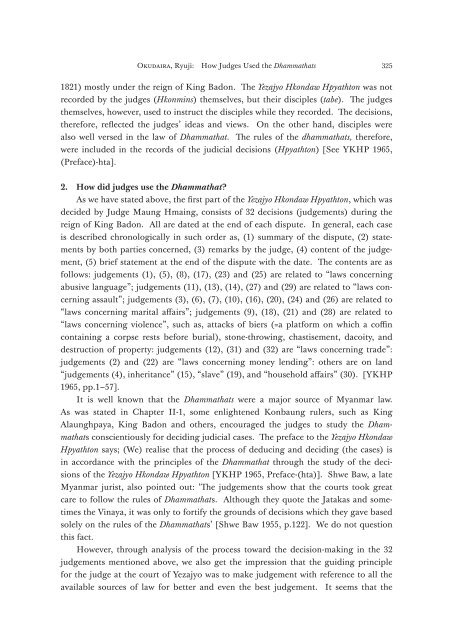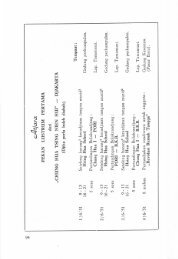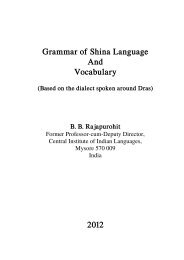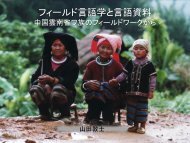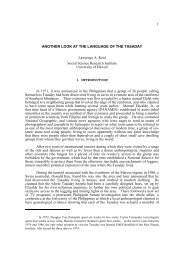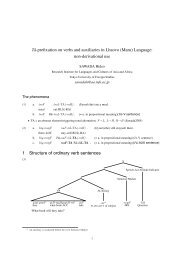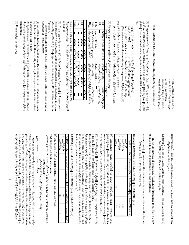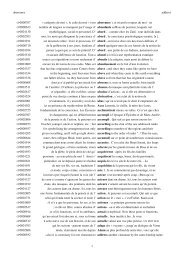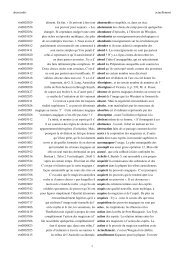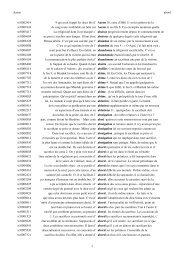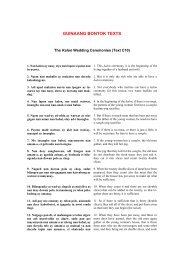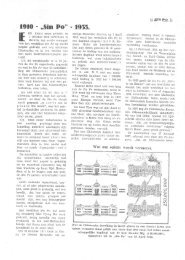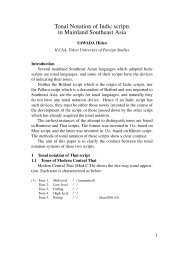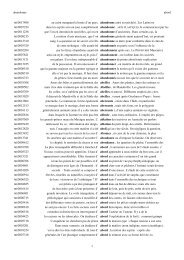ç® æ¬¡ - æ±äº¬å¤å½èªå¤§å¦ã¢ã¸ã¢ã»ã¢ããªã«è¨èªæåç 究æ
ç® æ¬¡ - æ±äº¬å¤å½èªå¤§å¦ã¢ã¸ã¢ã»ã¢ããªã«è¨èªæåç 究æ
ç® æ¬¡ - æ±äº¬å¤å½èªå¤§å¦ã¢ã¸ã¢ã»ã¢ããªã«è¨èªæåç 究æ
You also want an ePaper? Increase the reach of your titles
YUMPU automatically turns print PDFs into web optimized ePapers that Google loves.
O, Ryuji: How Judges Used the Dhammathats<br />
<br />
) mostly under the reign of King Badon. e Yezajyo Hkondaw Hpyathton was not<br />
recorded by the judges (Hkonmins) themselves, but their disciples (tabe). e judges<br />
themselves, however, used to instruct the disciples while they recorded. e decisions,<br />
therefore, reflected the judges’ ideas and views. On the other hand, disciples were<br />
also well versed in the law of Dhammathat. e rules of the dhammathats, therefore,<br />
were included in the records of the judicial decisions (Hpyathton) [See YKHP ,<br />
(Preface)-hta].<br />
. How did judges use the Dhammathat?<br />
As we have stated above, the first part of the Yezajyo Hkondaw Hpyathton, which was<br />
decided by Judge Maung Hmaing, consists of decisions (judgements) during the<br />
reign of King Badon. All are dated at the end of each dispute. In general, each case<br />
is described chronologically in such order as, () summary of the dispute, () statements<br />
by both parties concerned, () remarks by the judge, () content of the judgement,<br />
() brief statement at the end of the dispute with the date. e contents are as<br />
follows: judgements (), (), (), (), () and () are related to “laws concerning<br />
abusive language”; judgements (), (), (), () and () are related to “laws concerning<br />
assault”; judgements (), (), (), (), (), (), () and () are related to<br />
“laws concerning marital affairs”; judgements (), (), () and () are related to<br />
“laws concerning violence”, such as, attacks of biers (=a platform on which a coffin<br />
containing a corpse rests before burial), stone-throwing, chastisement, dacoity, and<br />
destruction of property: judgements (), () and () are “laws concerning trade”:<br />
judgements () and () are “laws concerning money lending”: others are on land<br />
“judgements (), inheritance” (), “slave” (), and “household affairs” (). [YKHP<br />
, pp.–].<br />
It is well known that the Dhammathats were a major source of Myanmar law.<br />
As was stated in Chapter II-, some enlightened Konbaung rulers, such as King<br />
Alaunghpaya, King Badon and others, encouraged the judges to study the Dhammathats<br />
conscientiously for deciding judicial cases. e preface to the Yezajyo Hkondaw<br />
Hpyathton says; (We) realise that the process of deducing and deciding (the cases) is<br />
in accordance with the principles of the Dhammathat through the study of the decisions<br />
of the Yezajyo Hkondaw Hpyathton [YKHP , Preface-(hta)]. Shwe Baw, a late<br />
Myanmar jurist, also pointed out: ‘e judgements show that the courts took great<br />
care to follow the rules of Dhammathats. Although they quote the Jatakas and sometimes<br />
the Vinaya, it was only to fortify the grounds of decisions which they gave based<br />
solely on the rules of the Dhammathats’ [Shwe Baw , p.]. We do not question<br />
this fact.<br />
However, through analysis of the process toward the decision-making in the <br />
judgements mentioned above, we also get the impression that the guiding principle<br />
for the judge at the court of Yezajyo was to make judgement with reference to all the<br />
available sources of law for better and even the best judgement. It seems that the


